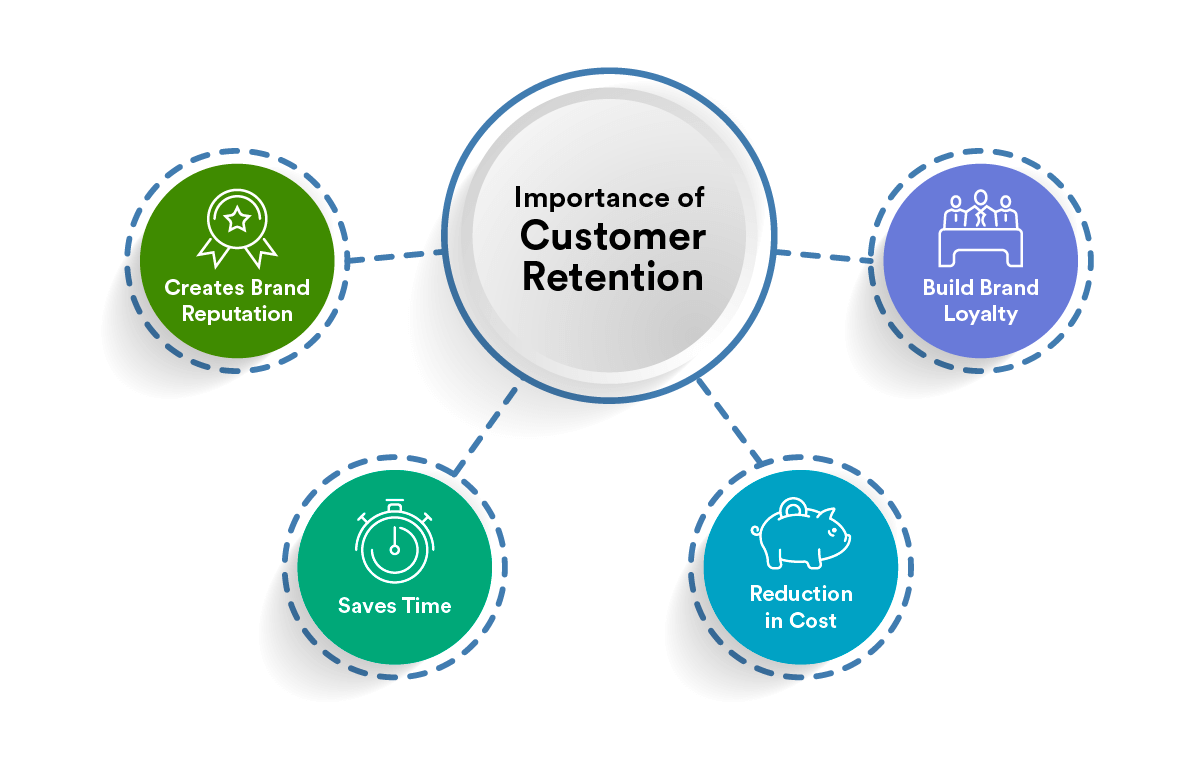Introduction:
In today’s competitive business environment, attracting new customers is only half the battle. Retaining them for the long term is where true business growth lies. Customer retention is a crucial aspect of a sustainable business model, as loyal customers not only bring consistent revenue but also act as advocates for your brand. In fact, studies show that retaining an existing customer is far more cost-effective than acquiring a new one.
In this article, we’ll explore why customer retention is vital, strategies to improve customer loyalty, and how to create lasting relationships that benefit both your business and your customers.
1. What is Customer Retention?
Customer retention refers to the strategies and actions a business employs to retain its customers over time. Rather than focusing solely on attracting new customers, customer retention emphasizes building strong, lasting relationships with current customers to keep them engaged, satisfied, and loyal.
Effective customer retention leads to repeat purchases, brand advocacy, and a higher lifetime value for each customer. A strong customer retention strategy involves understanding customer needs, providing exceptional experiences, and continuously offering value.
2. Why is Customer Retention Important?
Customer retention plays a pivotal role in the growth and sustainability of any business. Here’s why it matters:
1. Increased Profitability
Returning customers are more likely to make repeat purchases, often spending more than new customers. The longer a customer stays with your business, the more value they bring. Studies have shown that a 5% increase in office-one-plus.com can boost profits by 25% to 95%.
2. Cost-Effective Growth
Acquiring new customers is often expensive, involving marketing campaigns, promotions, and incentives. Retaining existing customers, however, is more cost-effective as it requires fewer resources to maintain a strong relationship. Additionally, loyal customers are more likely to make larger purchases over time, improving your return on investment.
3. Brand Advocacy
Satisfied, loyal customers can become powerful advocates for your brand. They are more likely to refer others, share their positive experiences, and provide testimonials. Word-of-mouth marketing from loyal customers can be more effective than any advertising campaign.
4. Competitive Advantage
In competitive markets, businesses with strong customer retention strategies stand out. Loyal customers are less likely to be swayed by competitors, giving your brand an edge in customer loyalty and market share.
5. Enhanced Customer Insights
Long-term customers provide valuable insights into customer behavior, preferences, and pain points. This information can help you refine your products, services, and marketing efforts to meet customer needs more effectively.
3. Strategies for Improving Customer Retention
There are several proven strategies that businesses can implement to improve customer retention and keep customers coming back:
1. Provide Exceptional Customer Service
Outstanding customer service is the foundation of customer retention. Customers want to feel valued, heard, and supported throughout their entire journey with your brand. Providing timely, empathetic, and personalized service is key to keeping customers satisfied.
- Offer multiple channels of support (e.g., phone, email, chat, social media) for convenience.
- Train your staff to handle issues professionally and go above and beyond to meet customer needs.
- Respond to complaints swiftly and effectively, turning negative experiences into positive ones.
2. Personalize the Customer Experience
Personalization shows customers that you understand their unique needs and preferences. Using customer data (such as purchase history, browsing behavior, and feedback) allows you to tailor your products, services, and communications for a more personalized experience.
- Segment your customer base and target them with tailored marketing messages or offers.
- Use customer names in emails and interactions to create a sense of familiarity.
- Send personalized recommendations based on previous purchases or browsing behavior.
3. Reward Loyalty
Loyalty programs are a great way to incentivize repeat business and show customers that their continued support is appreciated. Rewards can include discounts, free products, exclusive offers, or early access to new products.
- Create tiered loyalty programs to encourage customers to reach new levels of rewards.
- Offer exclusive deals or early-bird offers to loyal customers to make them feel valued.
- Send surprise rewards (e.g., birthday gifts or anniversary discounts) to show customers you care.
4. Engage Customers Regularly
Engaging with customers consistently helps maintain strong relationships. Regular communication through emails, social media, or newsletters keeps your brand top of mind and ensures customers stay informed about new products, offers, or updates.
- Send personalized emails with content relevant to the customer, such as special promotions, new arrivals, or product updates.
- Use social media to keep customers engaged with fun, informative, and interactive content.
- Host exclusive events (online or in-person) for loyal customers, such as product launches or webinars.
5. Ask for and Act on Feedback
Feedback is a valuable resource for improving your products, services, and overall customer experience. By actively soliciting feedback and acting on it, you show customers that their opinions matter, fostering a deeper sense of loyalty.
- Send follow-up surveys after purchases or customer service interactions to gauge satisfaction.
- Conduct regular focus groups or customer interviews to understand their evolving needs.
- Address feedback publicly, showcasing improvements made based on customer input.
6. Deliver Consistent Quality
Consistency in product or service quality ensures that customers know what to expect every time they interact with your business. When customers have a consistently positive experience, they are more likely to return.
- Ensure your products/services meet high standards and consistently deliver value.
- Streamline operations to reduce errors and improve efficiency.
- Maintain consistency across channels (e.g., online, in-store, and customer service).
7. Build Emotional Connections
Customers who feel emotionally connected to a brand are more likely to stay loyal for the long term. Creating an emotional connection goes beyond products and services—it involves aligning your brand with values and experiences that resonate with your customers.
- Tell your brand story in a way that connects with customers on a deeper level.
- Support causes or social issues that are important to your customers, showing your commitment to shared values.
- Build a community around your brand through social media groups, events, or online forums where customers can engage with each other.
4. Measuring Customer Retention
To determine whether your customer retention efforts are working, it’s important to track and measure key performance indicators (KPIs). Some of the most important KPIs for customer retention include:
-
Customer Retention Rate: The percentage of customers who continue doing business with you over a specific period.
Customer Retention Rate=(Customers at the End of the Period−New CustomersCustomers at the Start of the Period)×100\text{Customer Retention Rate} = \left( \frac{\text{Customers at the End of the Period} – \text{New Customers}}{\text{Customers at the Start of the Period}} \right) \times 100
-
Customer Lifetime Value (CLV): The total revenue a customer generates over their entire relationship with your business. CLV helps assess the long-term value of retaining customers.
-
Net Promoter Score (NPS): A measure of customer loyalty, NPS gauges the likelihood of a customer recommending your brand to others.
-
Churn Rate: The rate at which customers stop doing business with you. A high churn rate may indicate issues with customer satisfaction or retention strategies.
5. Conclusion
Customer retention is a vital element of a successful and sustainable business strategy. By providing exceptional service, personalizing the customer experience, rewarding loyalty, engaging with customers regularly, and acting on feedback, businesses can cultivate long-lasting relationships that drive growth and profitability. Retaining existing customers not only costs less than acquiring new ones but also results in greater lifetime value and brand advocacy.
In today’s competitive marketplace, focusing on customer retention can provide businesses with a powerful advantage, leading to increased customer loyalty, higher profits, and a more resilient brand.




